Fine jewelry, rare coins, and other treasures found in the graves of three Viking women dating to the ninth century C.E. suggest the women were wealthy and held high status in their community.
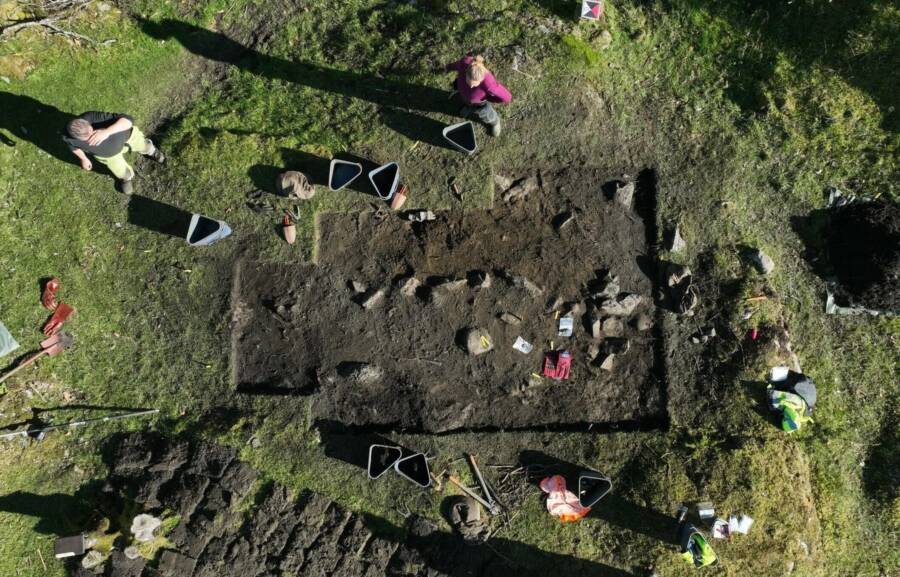
University Museum of BergenOne of the graves found at the site contained rocks arranged in the shape of a Viking boat.
Last year, metal detectorists in Norway stumbled upon a coin and a brooch at a former farm on the country’s west coast. At the time, it was assumed these relics hailed from the Viking Age, but this theory had not been confirmed.
Now, however, Norwegian archaeologists have reexamined the site where the objects were found, confirming those previous suspicions. What’s more, the researchers announced that this farm had once been a Viking burial site, and they believe there are as many as 20 graves at the location.
This autumn, they excavated three of those graves. They determined that they had belonged to wealthy Viking women, and they were filled with a small bounty of treasures indicating their high social status.
Uncovering The Graves Of Three Viking Women
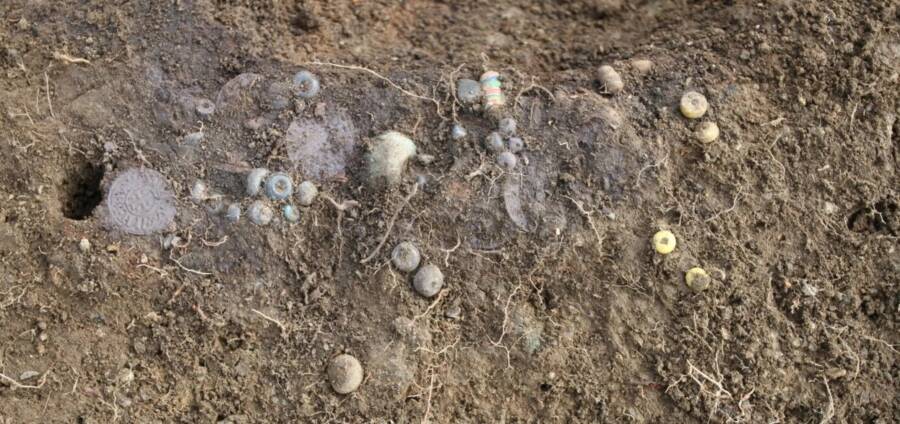
University Museum of BergenArchaeologists found jewelry and glass beads within the graves.
According to Science Norway, the burial site was a large farm during the ninth century C.E. that likely belonged to a local or regional king. Its location, however, would have also made it an ideal rest stop for weary travelers.
“On behalf of the king, shelter was provided to passing ships, which likely generated additional income,” said archaeologist Søren Diinhoff of the University Museum of Bergen. Bergen cited this as the reason for the wealth of the goods found within the graves.
Notably, none of the graves contained any human remains.
“That’s the problem with western Norway. The soil here consumes the bone remains,” Diinhoff said.
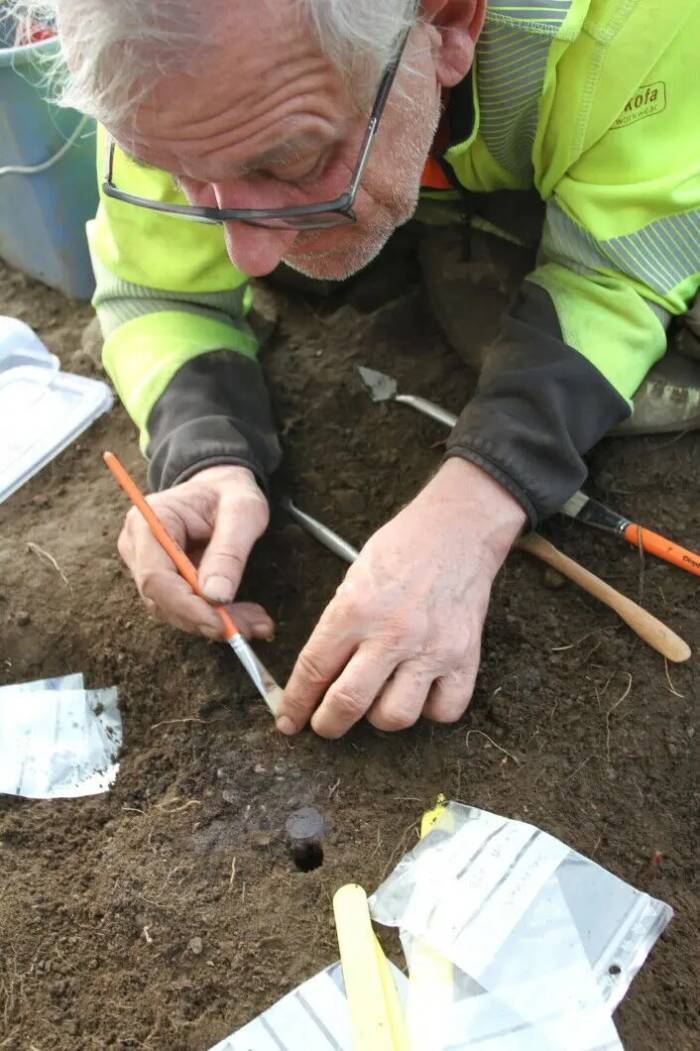
University Museum of BergenArchaeologist Søren Diinhoff excavating a grave.
One of the women was buried in a natural rock crevice and then covered with stones. Within the grave, archaeologists discovered jewelry and oval-shaped brooches typical of Viking women’s attire. Some of the jewelry, researchers noted, likely originated in England and Ireland.
Another woman, however, held an even higher status.
She was buried in a 13-foot-long arrangement of stones meant to resemble a Viking boat. Within her grave, researchers uncovered more oval brooches, jewelry, a necklace made of 46 glass beads, and 11 silver coins.
The woman was also outfitted with wool shears, a hetchel, a spindle whorl, and a weaving sword, all of which were used to produce textiles. What’s more, there was a bronze key in her grave.
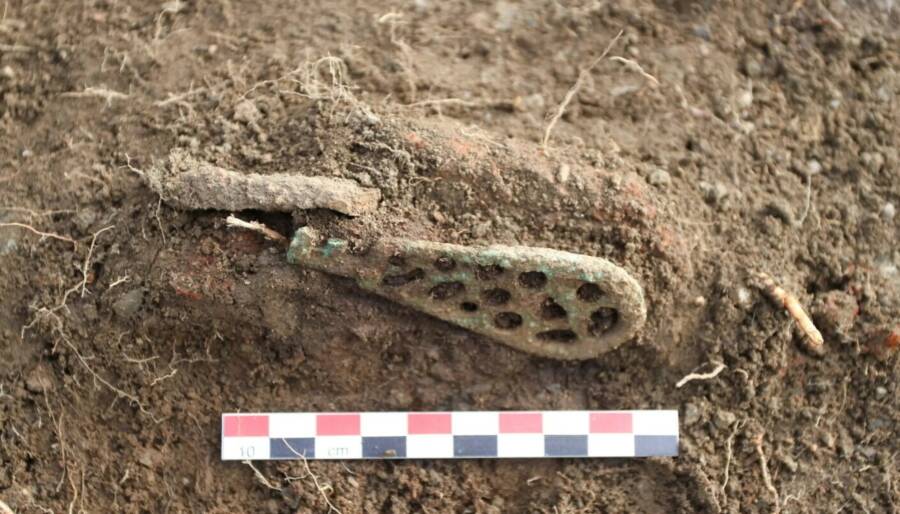
University Museum of BergenThe bronze key found in one grave could indicate that the woman it belonged to was the head of her household.
“Textile production was prestigious. Farms that made fine clothing held high status,” Diinhoff said. “[The key] also indicates that she held a role as the head of the household.”
Curiously, the necklace was seemingly placed separately from the woman’s body — if her body was ever buried there at all.
Were The Viking Graves Merely Symbolic?
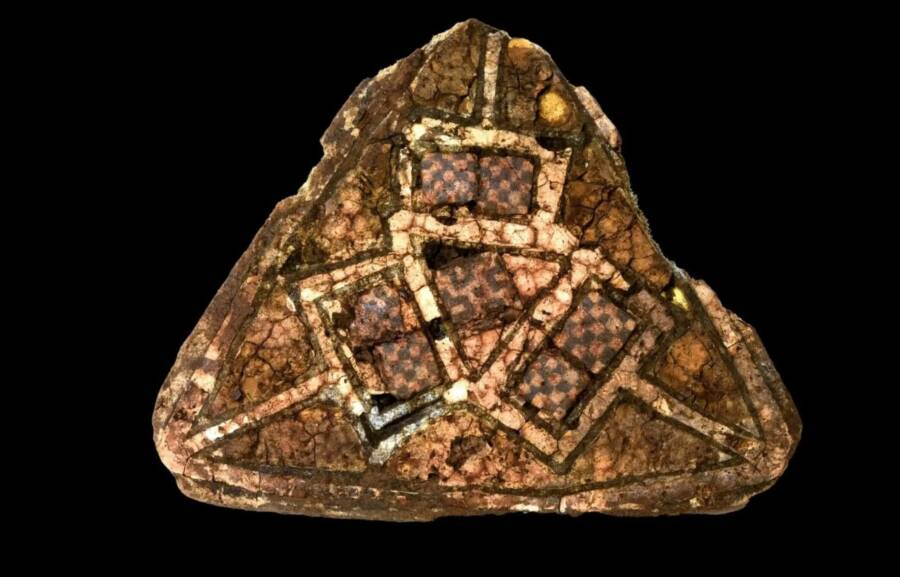
University Museum of BergenA triangular brooch discovered at the site.
When archaeologists found the necklace, it was placed on top of a dark organic mass. This indicates that it had not been around the woman’s neck but perhaps buried inside a leather pouch. This strange detail made researchers question if the woman had even been buried in the grave in the first place.
One theory is that this grave is actually a cenotaph, an empty grave that serves as a memorial for someone buried elsewhere. This is further evidenced by one fascinating stone found at the mast-point of the boat — one that resembled a “vulva stone,” which looked similar to female genitalia.
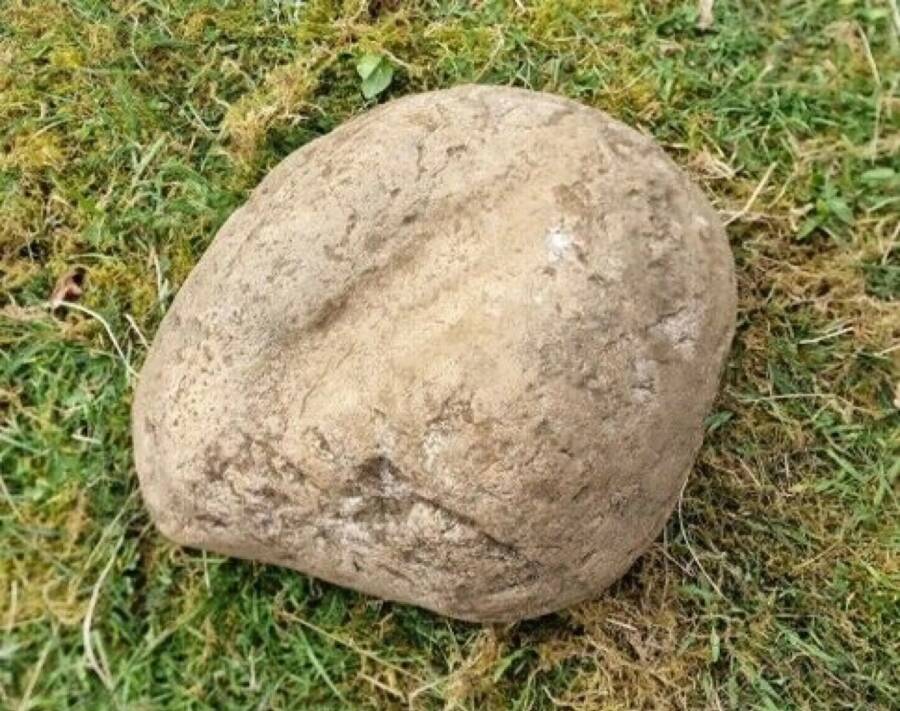
University Museum of BergenThe Viking “vulva stone” unearthed in the boat grave.
“It’s a small detail, but it’s insanely interesting,” Diinhoff said. “That the stone resembles a woman is no coincidence. It’s so obvious.”
This stone could have perhaps represented the woman to whom the cenotaph was dedicated if her body was not interred here. It would also explain why the grave goods were not found with any skeletons.
The third grave unearthed at the site has not yet been fully excavated. According to researchers, they simply found more than they were expecting in the first two and ran out of time to fully uncover the third. Still, what they have found is incredibly valuable — and time may be running out for future discoveries of a similar nature.
Sites Like This Are Abundant But May Soon Be Destroyed
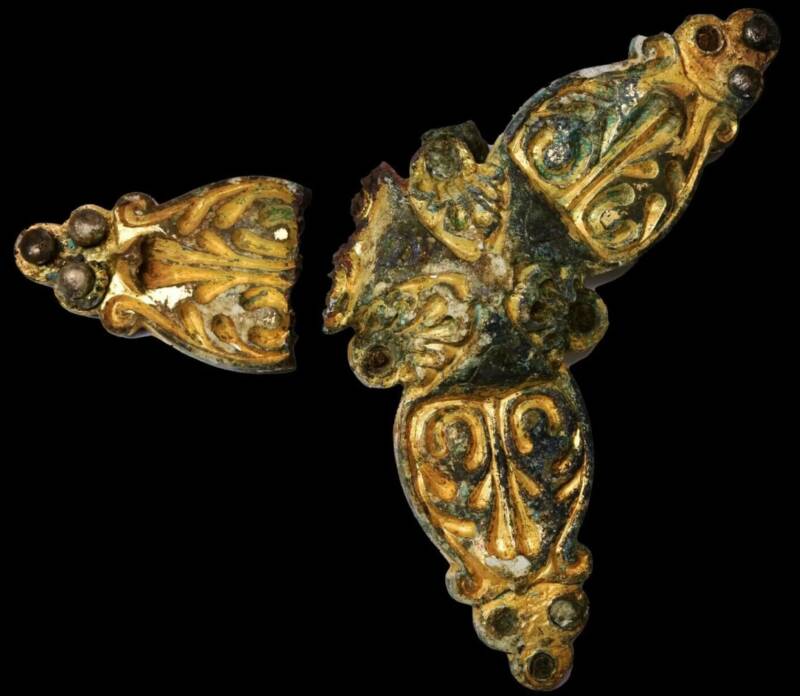
University Museum of BergenTrefoil brooches such as this were common in the Viking Age.
“In one year, we’ve excavated more Viking Age graves than we normally do in 10 years,” Diinhoff said. However, Diinhoff also believes that researchers should be conducting even more excavations across Norway.
“But when people find them on their land, they often remain silent. This happens alarmingly often,” he added. “When we’re finally on-site, we often learn that a grave was found years ago but was simply plowed over. We’re losing an immense number of these graves.”
There is a trade-off, though. In 50 years’ time, Diinhoff suggests, archaeological technology and methods will enable researchers to excavate sites more thoroughly while also preserving them better. On the other hand, many of these sites may not exist in half a century.
“Metal detectors sometimes force us to excavate graves we would have otherwise preserved,” he said. “But much of what we find with metal detectors will only be recoverable for a few more years before it’s destroyed.”
After reading about the discovery of these Viking women’s graves in Norway, look through our list of 32 fascinating Viking facts. Then, learn the shocking truth about Viking helmets.





